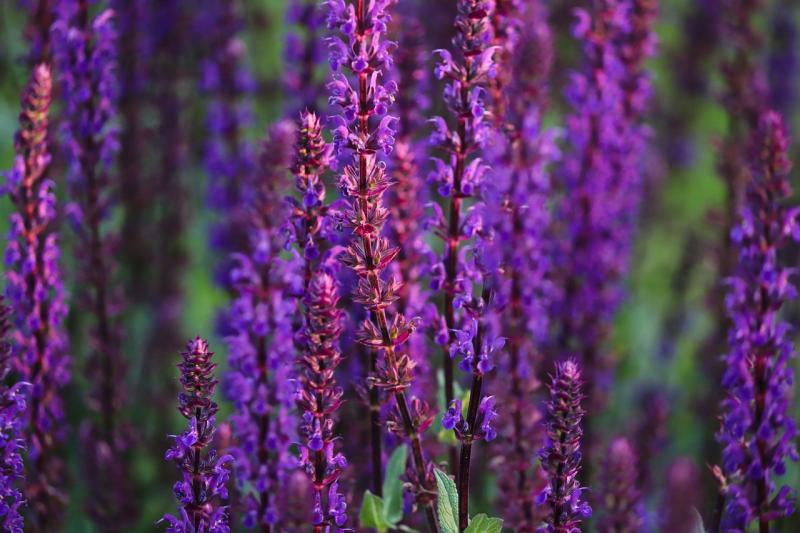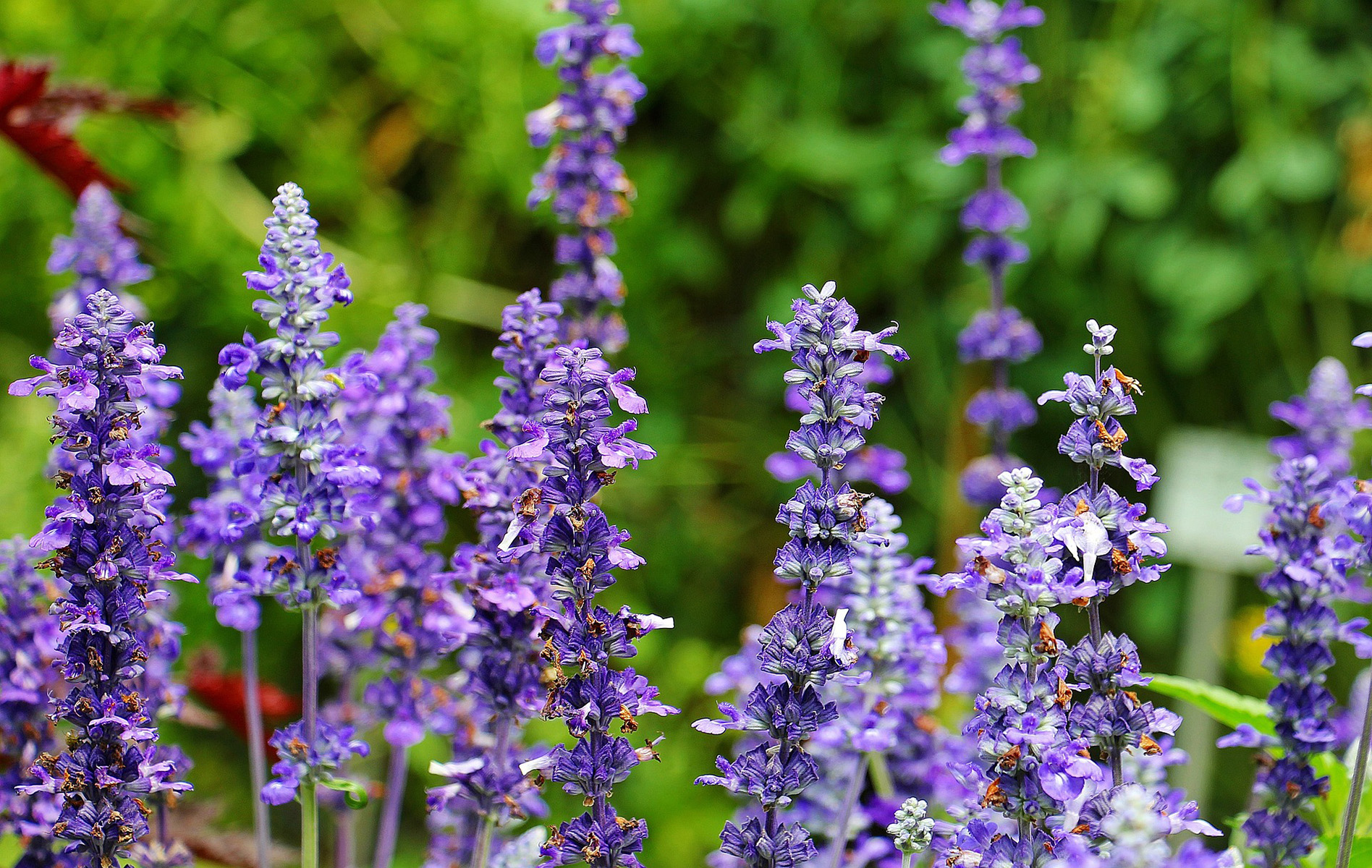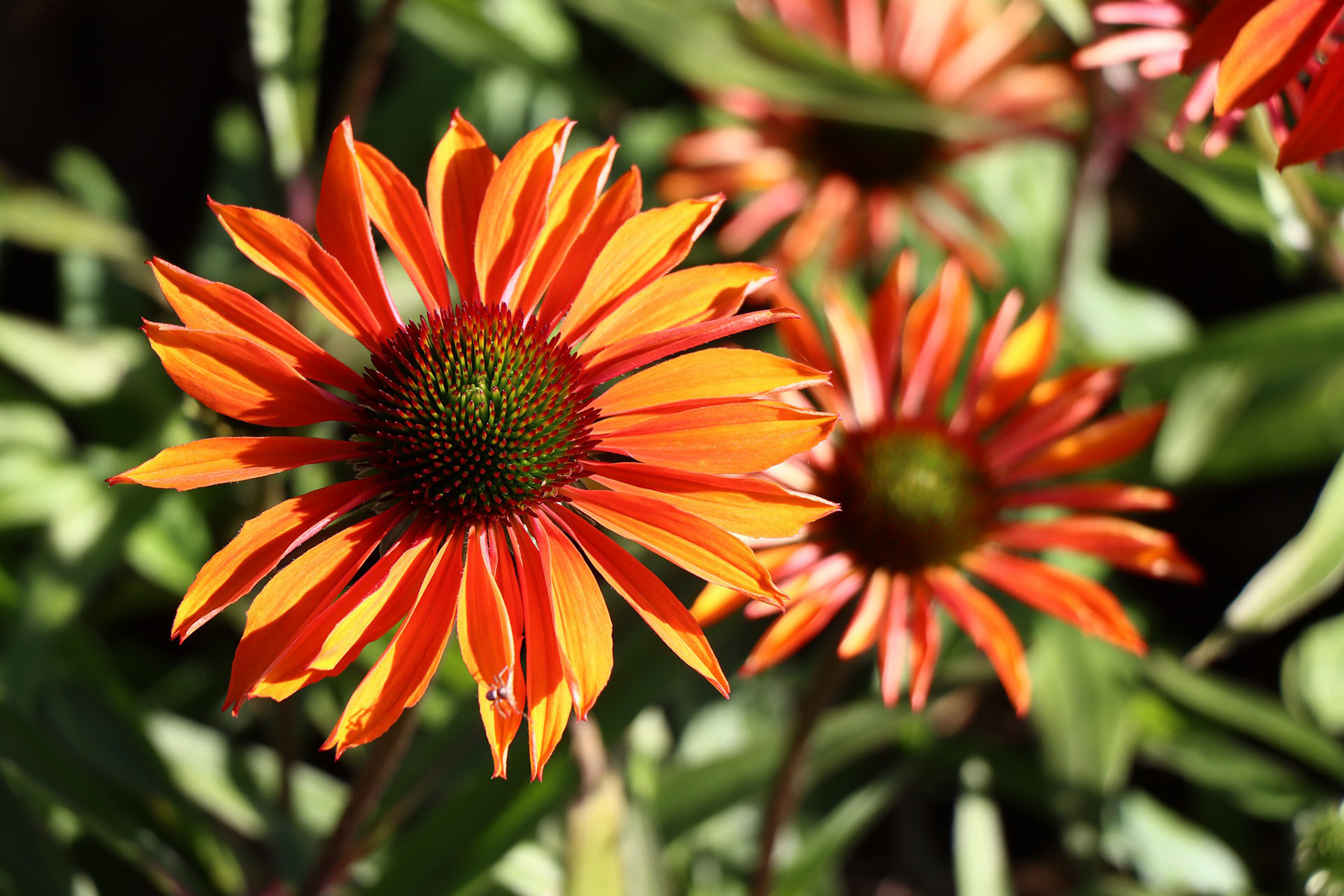
Choosing new plants for this summer's garden is a fun, early spring pastime for many gardeners, and last summer's extremely hot, dry conditions may have left a few holes in your landscape. So if you're looking for new perennials to add to your landscape this spring, consider the following plants that combine beauty with great drought tolerance.
 Perennial Salvia
Perennial Salvia
Salvia x sylvestris has many beautiful cultivars. 'Cardonna' was selected Outstanding Perennial in 2000 by the International Hardy Plant Union. It has a long blooming period with vibrant blue flowers, grows up to 24 inches tall and has a compact growth habit. The striking violet-blue flowers are very attractive when set against a light colored background or when mixed with white, yellow or orange flowers. 'Cardonna' has a beautiful flush of flowers in spring, but once they are done it needs to be trimmed back to new basal foliage.
Other great Salvias to look for include the following:
- 'East Friesland'- 18 inches tall, deep purple flowers
- 'May Night'- 18 inches tall, deep indigo flowers
- 'Lubecca'- 30 inches tall, violet-blue flowers
Russian Sage Perovskia atriplicifoliawas named the 1995 Perennial Plant of the Year and for good reason. Native to Afghanistan and Tibet, this perennial is named for Russian general V.A. Perovsky and in the garden, Russian sage provides beauty and fragrance through its attractive foliage and flowers.
Perovskia atriplicifoliawas named the 1995 Perennial Plant of the Year and for good reason. Native to Afghanistan and Tibet, this perennial is named for Russian general V.A. Perovsky and in the garden, Russian sage provides beauty and fragrance through its attractive foliage and flowers.
The foliage of Russian sage is a silvery, gray-green with coarsely toothed, opposite leaves. The plant reaches heights of 4-5' in the garden and is topped by 15" panicles of light blue flowers on square stems covered with white hairs. According to Allan Armitage, author of Herbaceous Perennial Plants, "The loose flowers and small foliage provide a feeling of lightness and airiness to the garden. The flowers ... are particularly stunning when combined with a white-flowered plant such as Boltonia." The flowers are very long lasting, up to 15 weeks from mid summer to fall, and are a good candidate for drying. Russian sage requires full sun and good drainage to perform well; it will not tolerate wet feet. It is hardy to Zone 5.
Several cultivars of Russian sage are available in the nursery trade. 'Blue Mist' is an early flowering type with lighter blue flowers than the species. 'Blue Spire' or 'Longin' has deep violet blue flowers and deeply cut foliage, which has a more upright growth habit than the species. 'Filagran' has very finely cut foliage giving it a filigreed appearance with spikes of blue flowers produced in late summer.
 Black-eyed Susan
Black-eyed Susan
A popular annual species,Rudbeckia hirta, often called simply black-eyed Susan, can be identified by the abundance of bristly hairs found on its stems, and the undersides of leaves and flower heads. This makes sense, since in Latin "hirta" means "rough, hairy".
But the beautiful, showy flowers are what attract gardeners. Flowering begins about mid-June and continues until plants are killed by frost, but removing flowers as they fade throughout the summer will further enhance blooming. Flowers range from 3 to 6 inches wide, in shades of yellow, orange, rust and mahogany, with bicolor and double types available. Attractive cultivars include:
- 'Cherry Brandy' – the first cherry red flowered Rudbeckia with a dark chocolate eye. Height 20 inches.
- 'Indian Summer' - single yellow/gold petals surrounding a dark eye. Height 30 inches.
- 'Irish Eyes' - yellow/orange petals surrounding a green eye. Height 30 inches.
- 'Sonora' - 5" wide bicolor flowers in mahogany/red and yellow. Height 15 to 20 inches.
- 'Toto' – gold/yellow petals surrounding a dark eye. Height 8 to 10 inches.
Rudbeckia hirta does best in full sun and well-drained soil, and tolerates dry conditions well. Avoid overhead irrigation to prevent fungal leaf diseases. Although some plants may survive Nebraska's winter conditions for a few years, Rudbeckia hirta is best treated as an annual. However, plants usually reseed themselves in the garden, resulting in a fun mix of flower colors and forms that differ from the original hybrid parents.
 Orange Coneflower
Orange Coneflower
A great perennial species of Rudbeckia is R. fulgida, commonly known as orange coneflower. It thrives in full sun or light shade with well-drained soil, even in Nebraska's hot, humid summers. Plants form clumps, thanks to their rhizomatous roots, and are prolific bloomers from mid-summer through fall. 'Goldsturm' is the most popular cultivar, with dark green foliage that lacks the bristly hairs of R. hirta. The foliage contrasts beautifully with the 3 to 4 inch wide, deep yellow flowers surrounding a nearly black eye. Height 18 to 30 inches. 'Goldsturm' was designated 1999 Perennial Plant of the Year by the Perennial Plant Association.
Try one of these beautiful and vigorous plants in your garden next year for additional summer color. For more ideas on water-wise perennial plants, refer to Perennials in Water-wise Landscapes, at http://www.ianrpubs.unl.edu/sendIt/g1214.pdf. Keep in mind that new plants don't develop full drought tolerance until they are well-established, usually 2-3 years after planting.
All images from Pixabay.com